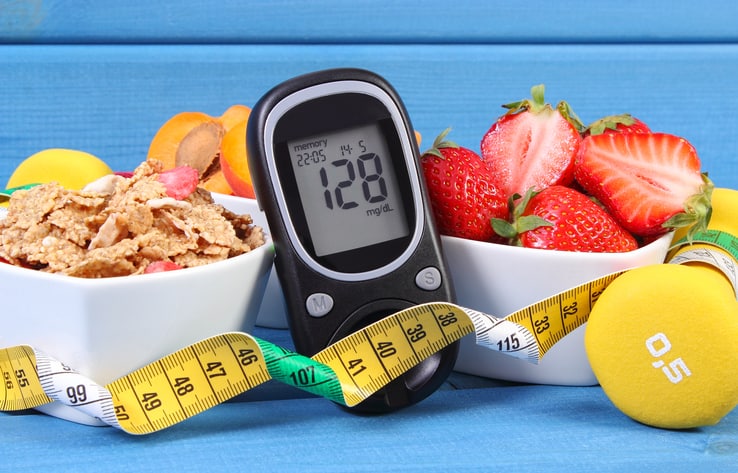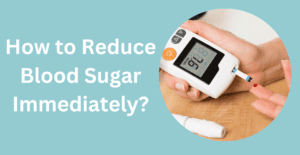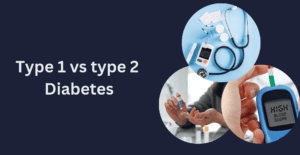Type 2 Diabetes is a chronic condition in which the body is unable to properly regulate blood sugar levels. It affects millions of people globally and can lead to serious health complications if left untreated. Early type 2 diabetes diagnosis and proper type 2 diabetes treatment are key to managing and preventing these complications. Type 2 diabetes treatment options include lifestyle changes such as diet and exercise, oral medications, and in some cases, insulin therapy. Regular monitoring of blood sugar levels and working with a healthcare provider are crucial in managing Type 2 Diabetes and reducing the risk of related health problems.
Diagnosis of Type 2 Diabetes
Type 2 diabetes is a common and serious health condition that affects millions of people globally. It occurs when the body is unable to properly regulate blood sugar levels, leading to high blood sugar levels over a prolonged period of time. Early detection and type 2 diabetes treatment can greatly improve health outcomes and prevent serious complications. In this blog, we will discuss the symptoms of Type 2 Diabetes, why they are important to be aware of, and the importance of early detection.
Common Symptoms of Type 2 Diabetes:
- Increased Thirst and Hunger: People with Type 2 Diabetes often experience increased thirst and hunger, as the body tries to regulate blood sugar levels by producing more insulin.
- Fatigue: High blood sugar levels can make a person feel fatigued, as the body struggles to use the sugar for energy.
- Blurred Vision: Changes in blood sugar levels can cause fluid changes in the eyes, leading to blurred vision.
- Slow Healing of Cuts and Bruises: High blood sugar levels can affect circulation and the body’s ability to heal wounds.
- Numbness or Tingling in the Feet: Over time, high blood sugar levels can cause nerve damage, leading to numbness or tingling in the feet and other parts of the body.
- Frequent Urination: Increased thirst can lead to frequent urination as the body tries to flush out excess sugar in the blood.
These symptoms can be subtle and often develop gradually over time, making it important for individuals to be aware of them and seek medical attention if they persist.
Early detection of Type 2 Diabetes can greatly improve health outcomes and prevent serious complications. High blood sugar levels over a prolonged period of time can cause damage to various organs, including the eyes, kidneys, nerves, heart, and blood vessels.
Early type 2 diabetes diagnosis involves a combination of symptoms and blood tests. A healthcare provider may suspect Type 2 Diabetes if an individual has symptoms such as increased thirst, frequent urination, blurred vision, fatigue, and slow healing of cuts and bruises.
The following blood tests are commonly used for type 2 diabetes diagnosis:
- Fasting Plasma Glucose Test (FPG): This test measures blood sugar levels after an overnight fast and is considered the standard test for type 2 diabetes diagnosis.
- Oral Glucose Tolerance Test (OGTT): This test measures blood sugar levels after a person has consumed a sugary drink. It is used to type 2 diabetes diagnosis and gestational diabetes.
- Hemoglobin A1C Test: This test measures average blood sugar levels over the past 2-3 months and is considered a good indicator of long-term blood sugar control.
A healthcare provider may use one or more of these tests for type 2 diabetes diagnosis, and may also consider an individual’s symptoms, medical history, and risk factors for the condition.
It is important to note that early detection of Type 2 Diabetes is important for improving health outcomes and preventing serious complications. Regular monitoring of blood sugar levels, lifestyle changes, and working with a healthcare provider is key to managing the condition and improving overall health.
Treatment of Type 2 Diabetes
Type 2 diabetes is a metabolic disorder that affects millions of people worldwide. It occurs when the body becomes resistant to insulin, the hormone responsible for regulating glucose (sugar) levels in the blood. This leads to high blood sugar levels and eventually, diabetes.
Here are some of the common causes and risk factors of type 2 diabetes:
- Obesity: Obesity is a major risk factor for type 2 diabetes. Being overweight or obese makes the cells in the body resistant to insulin, leading to high blood sugar levels.
- Lack of physical activity: Physical inactivity can increase the risk of type 2 diabetes as it reduces the body’s ability to use insulin effectively.
- Poor diet: A diet high in processed and sugary foods can contribute to the development of type 2 diabetes. Consuming large amounts of refined carbohydrates and sugar can lead to insulin resistance and high blood sugar levels.
- Genetics: Type 2 diabetes can run in families, and certain genetic traits can make individuals more susceptible to the condition.
- Age: As people age, they are more likely to develop type 2 diabetes due to declining insulin sensitivity and the body’s ability to produce insulin.
- Ethnicity: Certain ethnic groups such as African Americans, Hispanics, Native Americans, and Asian Americans are at a higher risk of developing type 2 diabetes.
- Medical history: People who have a history of gestational diabetes, polycystic ovary syndrome (PCOS), or a high fasting blood sugar level are at an increased risk of developing type 2 diabetes.
- Smoking: Smoking is a risk factor for type 2 diabetes as it can impair insulin sensitivity and increase the risk of developing insulin resistance.
Type 2 diabetes can be managed through a combination of lifestyle changes and medical type 2 diabetes treatment. The goal of type 2 diabetes treatment is to keep blood sugar levels within a target range, lower the risk of complications, and improve overall health.
Here are some of the common treatment options for type 2 diabetes:
- Lifestyle Changes: Making healthy lifestyle changes such as eating a balanced diet, engaging in regular physical activity, losing weight, and quitting smoking can help improve insulin sensitivity and lower blood sugar levels.
- Medications: Several types of Type 2 diabetes medications can be used to lower blood sugar levels in people with type 2 diabetes. These include:
- Metformin: a first-line type 2 diabetes medications that help reduce glucose production by the liver and improve insulin sensitivity
- Sulfonylureas: stimulates insulin production by the pancreas
- DPP-4 inhibitors: help improve insulin sensitivity and lower blood sugar levels
- GLP-1 receptor agonists: help lower blood sugar levels by increasing insulin secretion and reducing glucose production by the liver
- SGLT2 inhibitors: help lower blood sugar levels by increasing glucose excretion in the urine
- Insulin Therapy: Some people with type 2 diabetes may need to take insulin injections or use an insulin pump to help control their blood sugar levels.
- Bariatric Surgery: In severe cases of obesity, bariatric surgery may be recommended as a type 2 diabetes treatment. This type of surgery can help improve insulin sensitivity and lower blood sugar levels.
- Regular Monitoring: Regular monitoring of blood sugar levels and regular visits to a healthcare provider is important for monitoring the progress of type 2 diabetes treatment and making any necessary adjustments.
Home Remedies & Lifestyle Tips to treat Type 2 Diabetes
In addition to Type 2 diabetes medications and another medical type 2 diabetes treatment, there are several home remedies and lifestyle changes that can help manage type 2 diabetes. Here are some tips:
- Diet: A Diabetes Diet Plan that is low in refined carbohydrates and high in fiber, healthy fats, and protein can help improve insulin sensitivity and manage blood sugar levels. Some foods that may be beneficial for people with type 2 diabetes include:
- Leafy greens
- Berries
- Nuts and seeds
- Fish
- Legumes
- Exercise: Regular physical activity can help improve insulin sensitivity and lower blood sugar levels. Aim for at least 30 minutes of moderate-intensity activity most days of the week.
- Stress Management: Stress can affect blood sugar levels, so it’s important to find ways to manage stress effectively. Some stress management techniques include yoga, meditation, deep breathing exercises, and exercise.
- Sleep: Getting enough quality sleep is important for overall health and can also help manage blood sugar levels. Aim for 7-9 hours of sleep each night.
- Avoid smoking: Smoking can impair insulin sensitivity and increase the risk of complications.
- Stay hydrated: Drinking plenty of water can help regulate blood sugar levels and improve insulin sensitivity.
- Herbs and Supplements: Some herbs and supplements, such as cinnamon and magnesium, may help lower blood sugar levels and improve insulin sensitivity. However, it’s important to talk to a healthcare provider before starting any new supplements as they may interact with Type 2 diabetes medications and cause harm.
The Bottom Line
In summary, knowing the diabetes meaning & causes isn’t enough. Type 2 diabetes treatment involves a combination of lifestyle changes and medical type 2 diabetes treatment. Lifestyle changes such as a balanced diet and regular physical activity, stress management, getting enough sleep, avoiding smoking, staying hydrated, and incorporating certain herbs and supplements can help manage blood sugar levels and improve insulin sensitivity. Type 2 diabetes medications such as Metformin, Sulfonylureas, DPP-4 inhibitors, GLP-1 receptor agonists, and SGLT2 inhibitors can also be used to lower blood sugar levels. In severe cases of obesity, bariatric surgery may be recommended. Regular monitoring of blood sugar levels, reading Diabetes Blogs, and regular visits to a healthcare provider are important for monitoring the progress of treatment. It is important to work closely with a healthcare provider to create an individualized cure for type 2 diabetes.
FAQs
How can I cure Type 2 Diabetes Naturally?
Curing Type 2 Diabetes naturally can be a challenging task as there is no one definitive cure for type 2 diabetes. However, making healthy lifestyle changes and incorporating certain natural remedies can help improve insulin sensitivity and manage blood sugar levels. Here are some steps you can take:
- Diet: Eating a balanced diet and Diabetes Recipes that are low in refined carbohydrates and high in fiber, healthy fats, and protein can help improve insulin sensitivity and manage blood sugar levels.
- Exercise: Regular physical activity can help improve insulin sensitivity and lower blood sugar levels. Aim for at least 30 minutes of moderate-intensity activity most days of the week.
- Stress Management: Finding ways to manage stress, such as yoga, meditation, and deep breathing exercises, can help regulate blood sugar levels.
- Sleep: Getting enough quality sleep is important for overall health and can also help manage blood sugar levels. Aim for 7-9 hours of sleep each night.
- Avoid smoking: Smoking can impair insulin sensitivity and increase the risk of complications.
- Stay hydrated: Drinking plenty of water can help regulate blood sugar levels and improve insulin sensitivity.
- Herbs and Supplements: Some herbs and supplements, such as cinnamon and magnesium, may help lower blood sugar levels and improve insulin sensitivity. However, it’s important to talk to a healthcare provider before starting any new supplements as they may interact with medications and cause harm.
What is the Best Treatment for Type 2 Diabetes?
Type 2 diabetes treatment varies from person to person and depends on several factors such as age, overall health, and severity of the condition. However, a combination of lifestyle changes and medical type 2 diabetes treatment(cure for type 2 diabetes) is typically recommended. Here are some of the most common treatments for Type 2 Diabetes:
- Lifestyle Changes: Eating a balanced diet, getting regular physical activity, managing stress, getting enough sleep, avoiding smoking, staying hydrated, and incorporating certain herbs and supplements can help improve insulin sensitivity and manage blood sugar levels.
- Medications: There are several medications that can be used to lower blood sugar levels, including Metformin, Sulfonylureas, DPP-4 inhibitors, GLP-1 receptor agonists, and SGLT2 inhibitors. The choice of medication and the dose will depend on the individual’s needs and medical history.
- Bariatric Surgery: In severe cases of obesity, bariatric surgery may be recommended to help manage blood sugar levels and promote weight loss.
Can Type 2 Diabetes be cured completely?
No, the cure for type 2 diabetes doesn’t completely exist. However, it can be effectively managed with the right combination of lifestyle changes, type 2 diabetes diagnosis, and medical cure for type 2 diabetes. By making healthy lifestyle changes, taking medications as prescribed, and regularly monitoring blood sugar levels, most people with Type 2 Diabetes are able to effectively manage the condition and reduce their risk of complications. In some cases, blood sugar levels may return to normal without the need for medication, especially if weight loss is achieved through lifestyle changes. However, the disease is typically a chronic condition, and management will be needed for the rest of the person’s life. It is important to work closely with a healthcare provider to create an individualized cure for type 2 diabetes.
Can Type 2 Diabetes be cured by Exercise?
Exercise can play a significant role in managing type 2 diabetes diagnosis, but it cannot cure for type 2 diabetes. Regular physical activity can improve insulin sensitivity, lower blood sugar levels, and help with weight loss, which can in turn improve overall diabetes control. In some cases, engaging in regular physical activity and making other lifestyle changes such as eating a balanced diet, managing stress, and getting enough sleep, can even lead to blood sugar levels returning to normal without the need for medication. Know more about Type 1 Diabetes Vs Type 2 Diabetes. However, for most people with Type 2 Diabetes, exercise will need to be combined with other cure for type 2 diabetes such as medication and lifestyle changes for effective diabetes management. It is important to talk to a healthcare provider before starting any new exercise program to ensure that it is safe and appropriate for your individual needs and health status.









